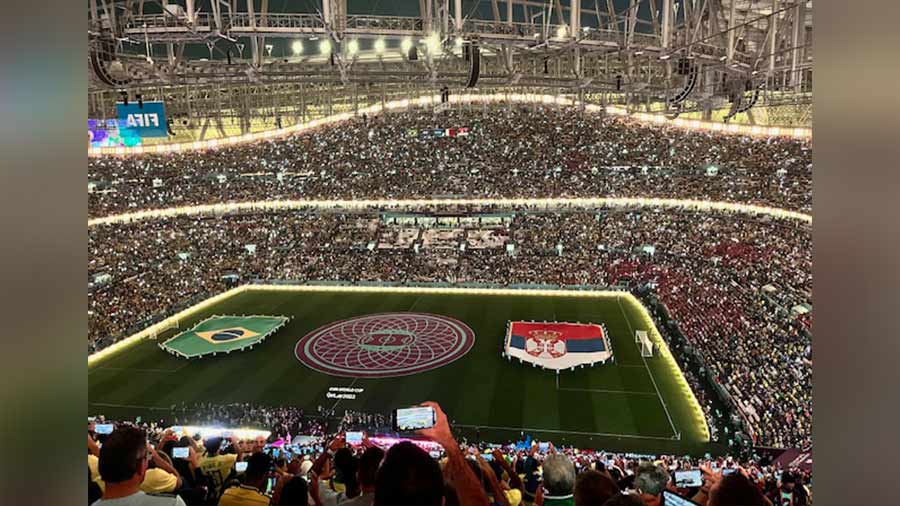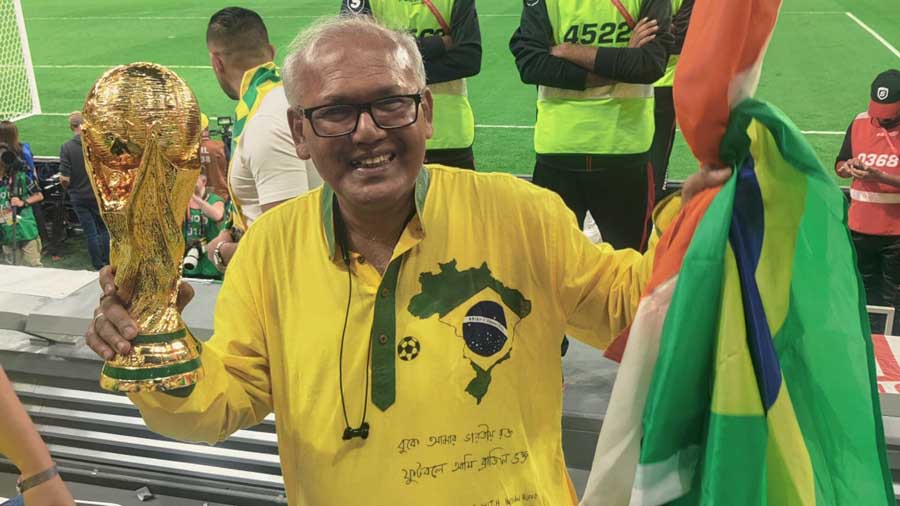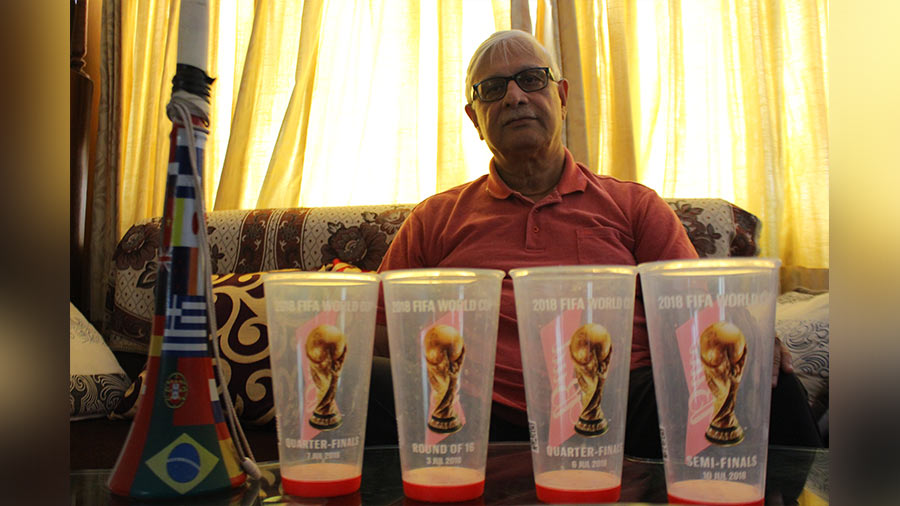We landed in Doha all excited to watch the World Cup in person and the welcome we received made us relish the prospect even more. At the airport, we were given free SIMs loaded with talktime and data for three days, a thoughtful gesture that brought a smile to our faces. Even with international roaming activated, the extra mobile data will come in handy with tons of sights and sounds to capture and share on our phones, we thought.
Till that point, coffee and date meant to me a date over coffee. But as we headed out of the airport that day, we had coffee with dates in true Arabic style. The next seven days were just as mind-expanding and enjoyable, thanks to the arrangements that allowed us to immerse ourselves in the football and the global congregation of fans that surrounded it.
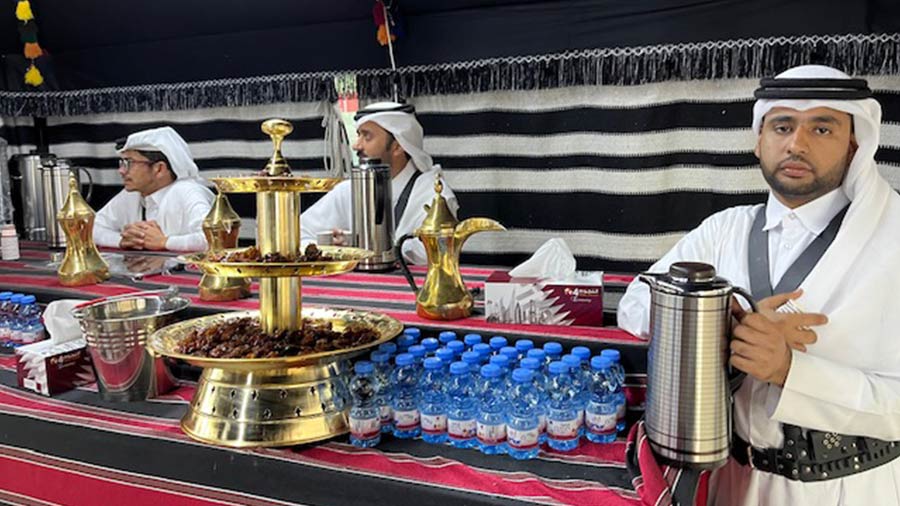
Coffee with dates at the airport
One unique aspect of this World Cup is that all the matches are being held in one city. Hence, the fans and the vibe and the energy are also all packed into that one city! This is an immense infrastructure challenge and it was amazing how smoothly Doha sailed through.
Accommodation
We stayed in the fan village at Al Janoub at the southern end of Doha. Designed like a sprawling para with at least 3,000 dwelling units, each accommodating two persons, the village also has superstores, eateries and a Fan Zone, where those not going to the stadium can watch the matches with others.
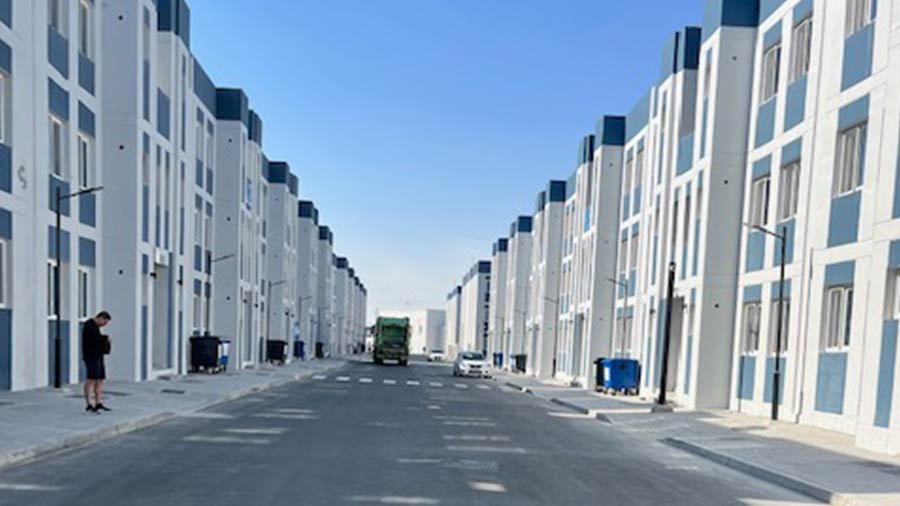
The fan village at Al Janoub
The dwelling units are comfortable enough for a good night’s sleep and a morning cuppa before one heads outside to enjoy the day. And full marks to the team that manages the massive-scale check-in and out with elan.
We came across fan villages of tents, converted-containers and mobile homes. Rather than carry the deadwood of the World Cup, Qatar plans to reuse the space after the tournament is over. I heard that the massive fan village we stayed in might also be razed after the World Cup.
Transportation
Our accommodation was a good 20 minutes away from the southernmost Metro station, Al Wakrah. The availability of very modern shuttle buses ensured that the commute was never a hassle. Even when we returned after the 10pm (12.30am IST) matches, there was an unending number of buses waiting to ferry the fans. Even though we were in thousands, we never had to wait for a bus. It was the other way round!
The Metro network covers the entire city and fans could travel free on the trains by displaying the Hayya card, which was required almost everywhere in the country. Pre and post match, the stations closer to the stadiums got very crowded but the traffic management within and outside the stations was outstanding.
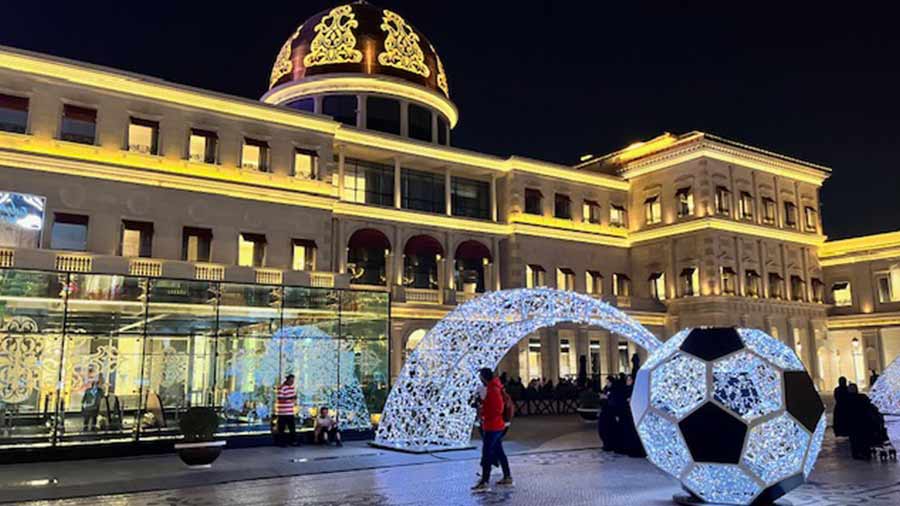
A city mall decorated with the World Cup theme
The ubiquitous marshals played a key role in managing the crowd. They stood outside the stations, continually chanting: “Metrooo... this way.” Those chants will remain as much a part of my World Cup memories as Japan defeating Germany, Richarlison’s bicycle-kick goal against Serbia and Ronaldo’s faux goal against Uruguay.
Stadiums
The infrastructure created by Qatar in the last 12 years includes seven stadiums! And these stadiums are excellently designed and provide a great experience to the spectators and, I am sure, the players and team staff. The stadiums are air-cooled and there was no discomfort because of heat — although the mild November weather must also have helped. Entry and exit were superbly managed for pedestrians and Metro/shuttle bus users alike. The only issue was the distance we had to walk. On Day One, my app recorded 19km. On Day Two, it was 16.7km and likewise.
The Party
The World Cup had turned Doha into one big party (sans alcohol). The massive Fan Zone at the Al Bidda Park was full of life with matches being shown live on a massive screen, DJ music, arenas by sponsors, FIFA museum and more.
At the Souq Wakif, the traditional Arabian market, most things one could think of were being sold — from houses to camels to falcons. It also housed a fantastic collection of eating houses serving Arabian and West Asian cuisine. Most fans assembled there for a taste of the local culture.
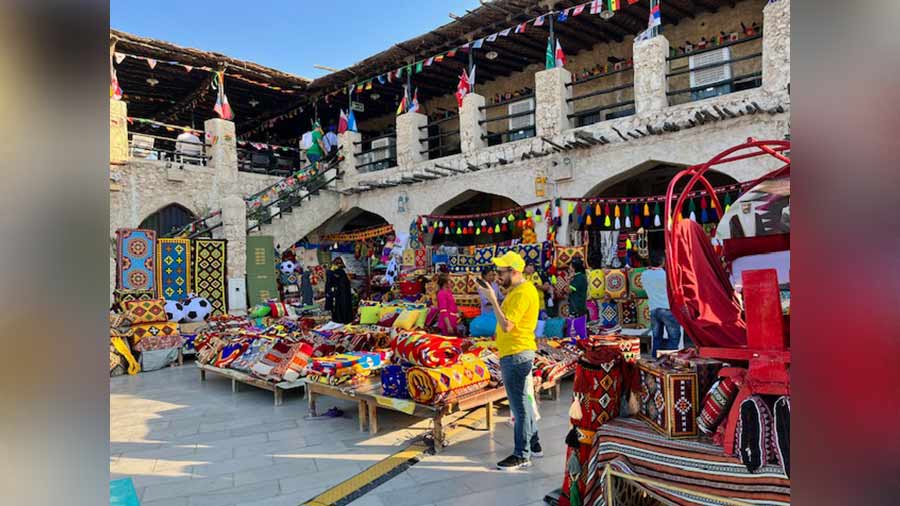
The Souq Wakif
The decked-up Corniche or the bayfront was another place to chill with its beautiful view across the bay of downtown buildings lit up to celebrate the matches of the day. It was the perfect place to hang out early in the evening and between matches.

The view from the Corniche or the bayfront
The Non-English World
I hardly heard English during my week in Qatar! With fans mostly coming from South America, mainland Europe, and the length and breadth of West Asia, it was predominantly Spanish, Portuguese and Arabic that hit the ears, apart from some other languages that I could not discern. But most understood English well enough for communication not to be a problem. With South Asians providing services in Qatar, Hindi (Indians and Pakistanis) and Bangla (Bangladeshis) were the most common languages at the service points. Learning at the Souq to approach the Arabs with “Habibi” and a smile also helped.

Camels on display at the Souq
As an Indian, what impressed me most was Qatar’s ability to define processes for each transaction point and build infrastructure/teams/systems to enforce them. The whole system worked like a well-oiled machine without the visible presence of supervisors, managers and their ilk. Of course, we must not forget the other side: fans from 50+ countries were largely ready to walk the extra mile (sometimes literally!) to adhere to the rules and processes.
Seeing a small country host a FIFA World Cup by building almost everything from the ground up with a plan to later break down many of those things, I as an ardent football fan wondered when India would attempt something similar. We have more than enough stadiums (even if they need upgrades), at least 10 cities that can host the matches and the human resources for everything else we need to build and deliver. Maybe all we need is the right set of folks to dream about an Indian World Cup and get the ball rolling! The wait begins.
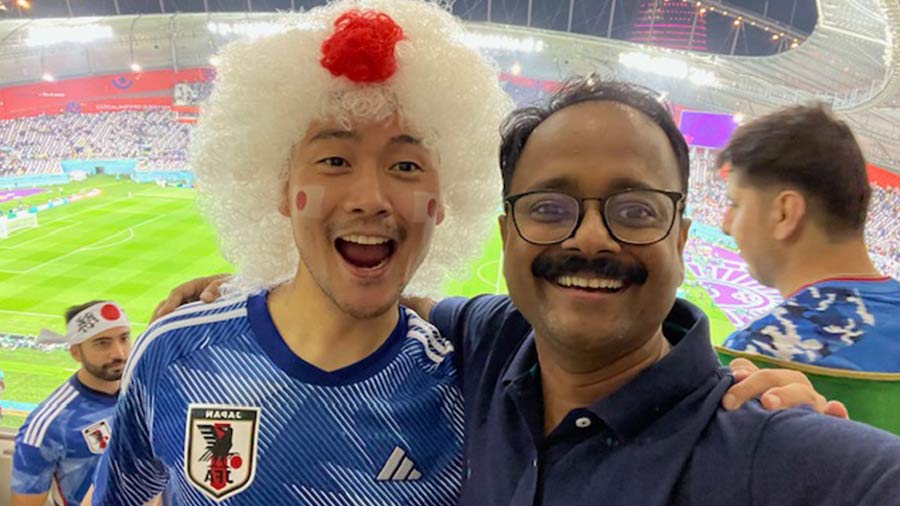
The author with a fan from Japan at one of the matches
